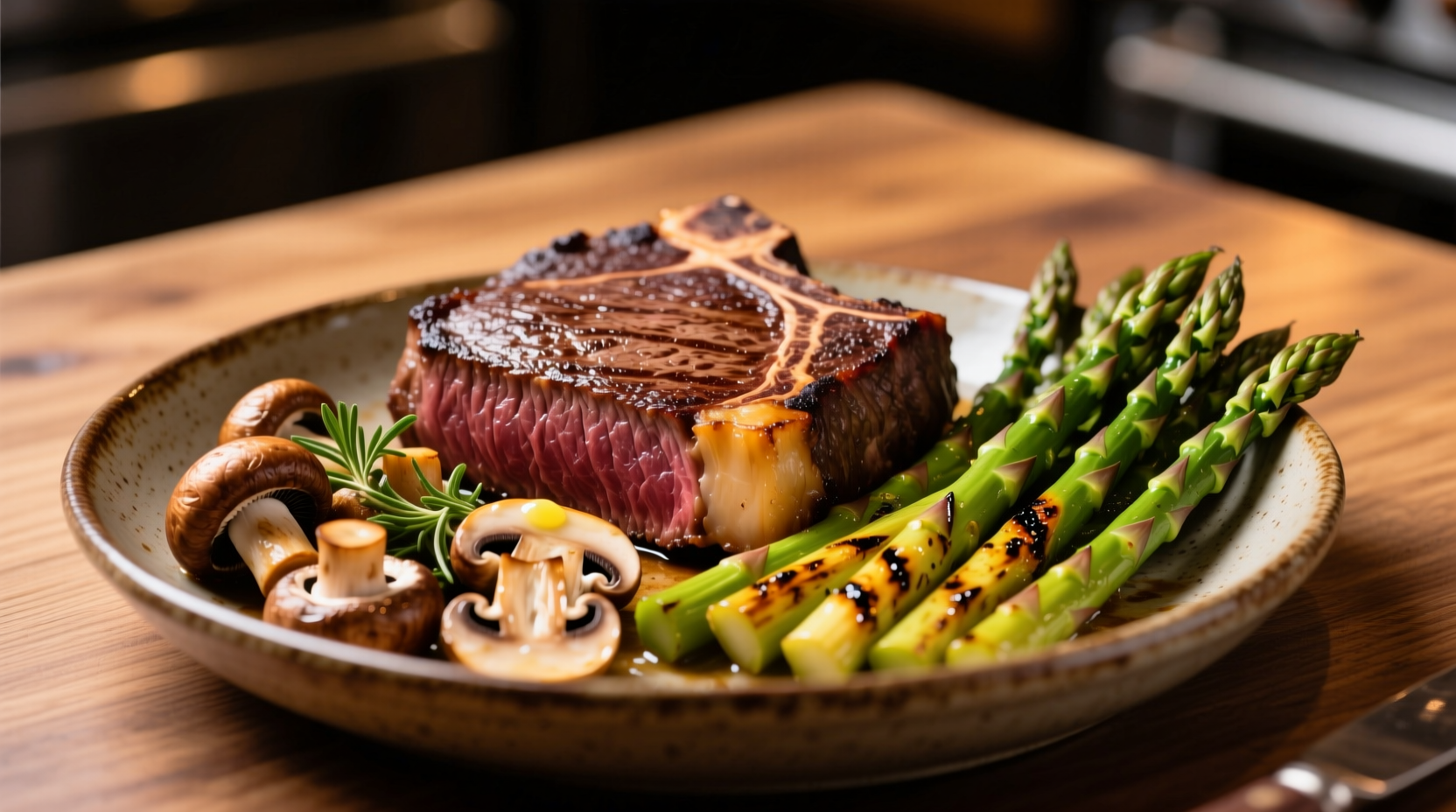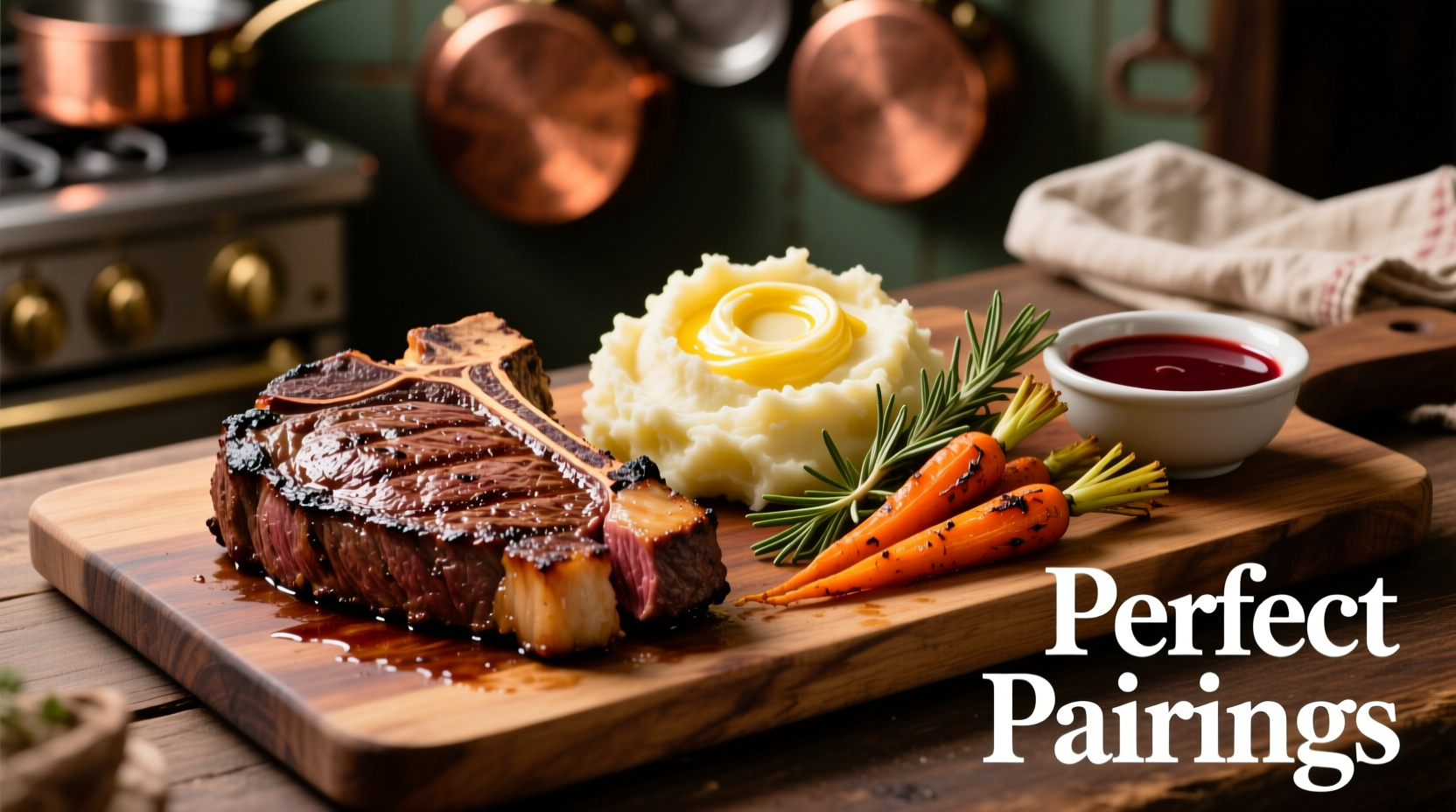The best foods to pair with steak include roasted potatoes, grilled asparagus, sautéed mushrooms, crisp green salads, and classic sauces like béarnaise or chimichurri. For optimal flavor balance, match rich cuts like ribeye with acidic sides like tomato salad, while leaner cuts like filet mignon pair beautifully with buttery preparations like garlic mashed potatoes.
When planning the perfect steak dinner, knowing what food goes well with steak transforms a simple meal into a culinary experience. This guide delivers practical pairing strategies backed by professional cooking principles, helping you create balanced plates that elevate your steak without overpowering its natural flavors.
Understanding Steak Pairing Principles
Successful steak pairings follow three fundamental culinary rules: balance richness, contrast textures, and complement flavors. Steak's natural umami and fat content demands sides that cut through richness while enhancing the meat's inherent qualities. Professional chefs consistently apply these principles whether preparing a weeknight dinner or special occasion meal.
| Steak Characteristic | Recommended Pairing Approach | Example Pairings |
|---|---|---|
| Rich, fatty cuts (ribeye, porterhouse) | Acidic, bright sides to cut richness | Tomato salad, chimichurri, roasted bell peppers |
| Lean cuts (filet mignon, flank) | Richer accompaniments to enhance moisture | Garlic butter mushrooms, truffle mashed potatoes |
| Strongly flavored cuts (skirt, hanger) | Bold flavors that stand up to intensity | Charred corn, blue cheese wedge salad, roasted garlic |
Classic Steak Dinner Pairings
Traditional steakhouse sides remain popular for good reason—they've been perfected through decades of culinary practice. These pairings work across most steak varieties and cooking methods:
Potato Preparations That Never Fail
Potatoes provide the ideal textural contrast to tender steak while absorbing delicious meat juices. According to culinary research from the Culinary Institute of America, the starch content in potatoes creates a natural flavor bridge between meat and other components. Their studies show that roasted potatoes develop complex flavor compounds through the Maillard reaction that complement beef's natural umami.
- Twice-baked potatoes - The creamy interior and crispy exterior create perfect textural contrast
- Herb-roasted fingerlings - Their thin skins crisp beautifully while retaining moisture
- Truffle mashed potatoes - The earthy aroma enhances steak's natural flavors
Essential Vegetable Sides
Vegetables provide necessary acidity and freshness to balance steak's richness. The James Beard Foundation's 2024 culinary trends report identified asparagus, mushrooms, and green beans as the top three vegetable pairings for steak across American restaurants.

Modern Pairing Innovations
Contemporary chefs have expanded traditional steak pairings while respecting fundamental flavor principles. These creative combinations work particularly well for special occasions:
Unexpected but Delicious Combinations
Consider these innovative pairings that professional kitchens increasingly feature:
- Grilled peaches with blue cheese - The fruit's sweetness balances steak's savory notes
- Kimchi fried rice - Fermented flavors cut through richness while adding complexity
- Roasted beetroot with horseradish cream - Earthy sweetness complements charred steak
Pairings by Steak Cut
Different cuts require tailored pairing approaches based on their unique characteristics:
Ribeye and Porterhouse Recommendations
These marbled cuts benefit from acidic counterpoints:
- Tomato and basil salad with balsamic reduction
- Charred lemon asparagus
- Roasted shallots with red wine reduction
Filet Mignon Pairings
Leaner filet mignon shines with rich accompaniments:
- Truffle macaroni and cheese
- Sauteed wild mushrooms in garlic butter
- Creamed spinach with nutmeg
Seasonal Pairing Guide
Adapt your steak sides to what's fresh and in season for optimal flavor:
| Season | Best Vegetable Pairings | Recommended Preparation |
|---|---|---|
| Spring | Asparagus, peas, radishes | Quick blanching or light grilling |
| Summer | Tomatoes, zucchini, corn | Raw preparations or char-grilling |
| Fall | Squash, beets, Brussels sprouts | Roasting or caramelizing |
| Winter | Root vegetables, kale, cabbage | Slow roasting or braising |
Avoiding Common Pairing Mistakes
Even experienced cooks sometimes make these pairing errors:
- Overpowering the steak - Avoid sides with stronger flavors than your steak
- Mismatched textures - Don't serve multiple soft sides that lack contrast
- Ignoring cooking method - Grilled steak pairs differently than pan-seared
- Forgetting temperature contrast - Hot steak benefits from one cool element
Special Dietary Considerations
Adapt pairings for various dietary needs without sacrificing flavor:
- Low-carb/keto - Roasted cauliflower, grilled asparagus, green salad with olive oil dressing
- Gluten-free - Naturally gluten-free potatoes, sweet potatoes, and most vegetables
- Vegan sides - Charred vegetables, roasted mushrooms, tomato salads
Creating Balanced Steak Plates
The most satisfying steak meals follow this plate composition formula used by professional chefs:
- 50% of plate: Steak (the star)
- 25% of plate: Starchy side (potatoes, rice, etc.)
- 20% of plate: Vegetable side (providing color and freshness)
- 5% of plate: Sauce or finishing element (adds moisture and flavor accents)











 浙公网安备
33010002000092号
浙公网安备
33010002000092号 浙B2-20120091-4
浙B2-20120091-4